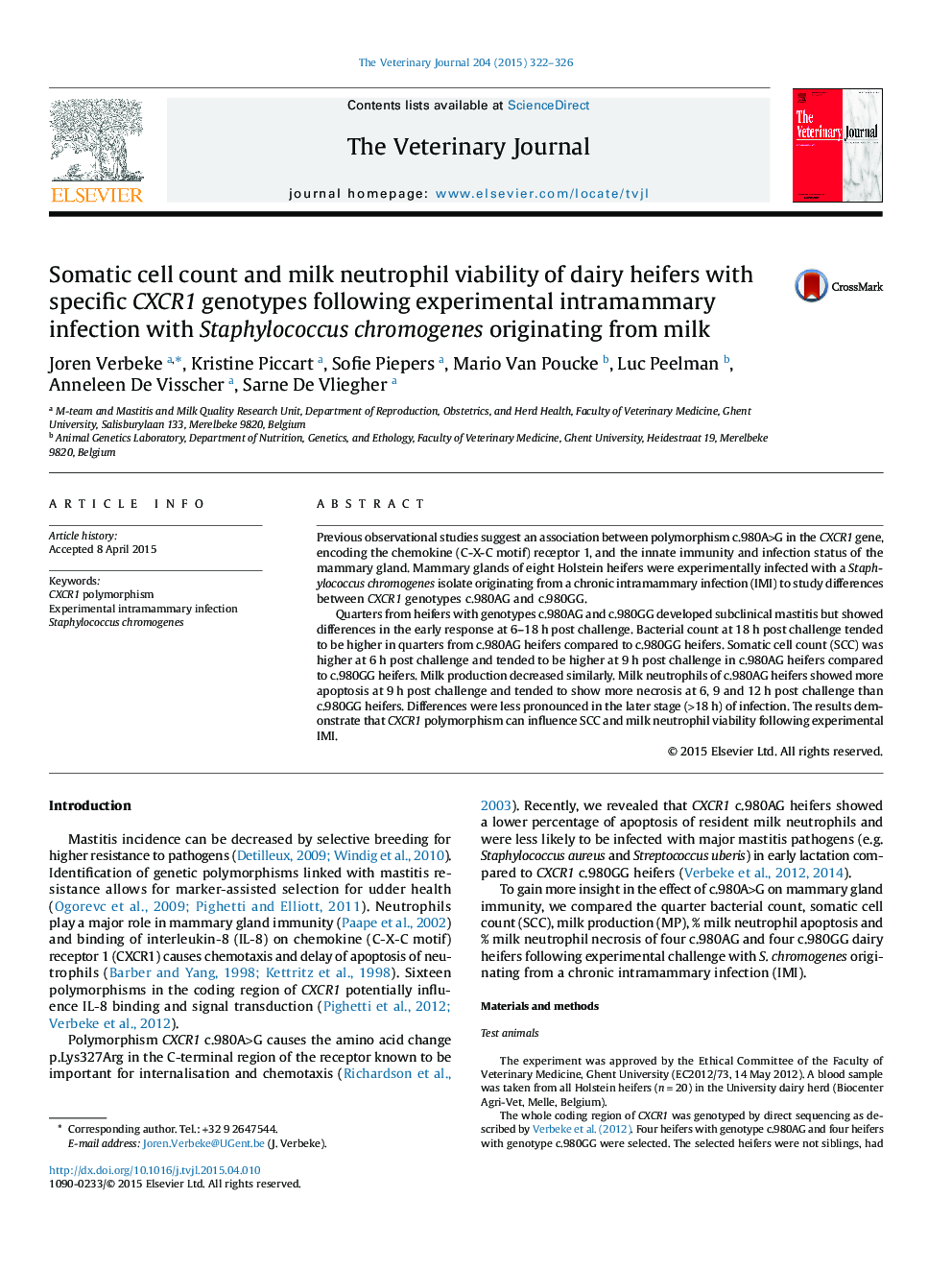| Article ID | Journal | Published Year | Pages | File Type |
|---|---|---|---|---|
| 2463856 | The Veterinary Journal | 2015 | 5 Pages |
•Mammary glands of eight dairy heifers were infected with Staphylococcus chromogenes.•Associations between host response and the CXCR1 c.980A>G genotype were studied.•Bacteria were rapidly eliminated in both c.980AG and c.980GG heifers.•c.980GG heifers showed a higher somatic cell count in early infection.•c.980GG heifers showed a higher milk neutrophil viability in early infection.
Previous observational studies suggest an association between polymorphism c.980A>G in the CXCR1 gene, encoding the chemokine (C-X-C motif) receptor 1, and the innate immunity and infection status of the mammary gland. Mammary glands of eight Holstein heifers were experimentally infected with a Staphylococcus chromogenes isolate originating from a chronic intramammary infection (IMI) to study differences between CXCR1 genotypes c.980AG and c.980GG.Quarters from heifers with genotypes c.980AG and c.980GG developed subclinical mastitis but showed differences in the early response at 6–18 h post challenge. Bacterial count at 18 h post challenge tended to be higher in quarters from c.980AG heifers compared to c.980GG heifers. Somatic cell count (SCC) was higher at 6 h post challenge and tended to be higher at 9 h post challenge in c.980AG heifers compared to c.980GG heifers. Milk production decreased similarly. Milk neutrophils of c.980AG heifers showed more apoptosis at 9 h post challenge and tended to show more necrosis at 6, 9 and 12 h post challenge than c.980GG heifers. Differences were less pronounced in the later stage (>18 h) of infection. The results demonstrate that CXCR1 polymorphism can influence SCC and milk neutrophil viability following experimental IMI.
